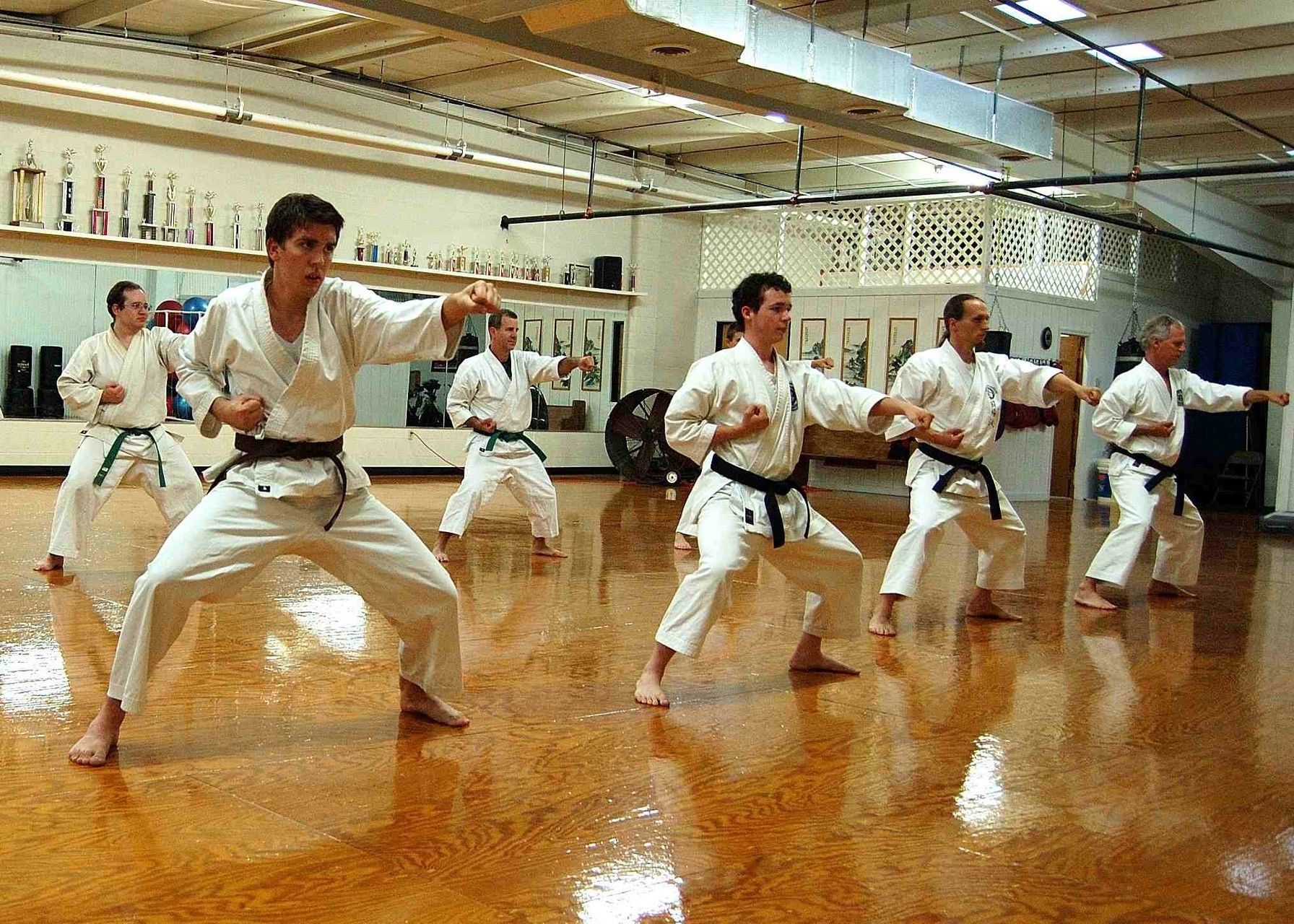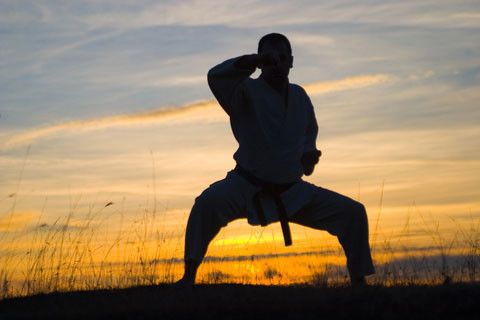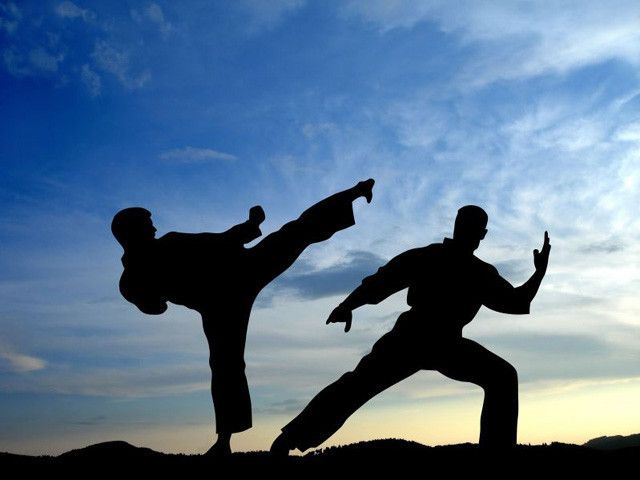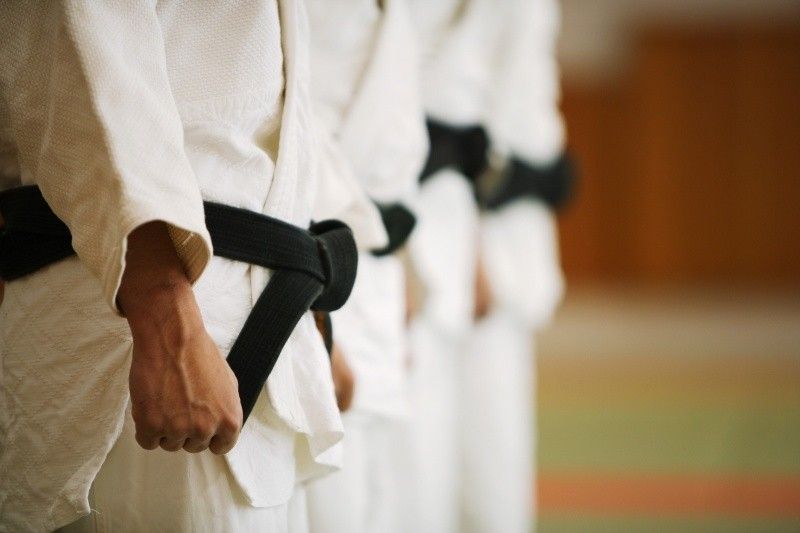MARTIAL ARTS
We sell many items designed for a variety of different martial arts, fighting styles and combative sports. This summary of different martial arts, fighting styles and combative sports is designed for quick information for the beginner and as a guide for the potential student to find the style best suited for them. It is our opinion that there is no such thing as a "best style". Because every person has unique and individual needs, certain styles are better suited for certain people. Not every style is listed due to limited space. We have tried to list the most commonly practiced or known styles. For more detailed information it is suggested you do further research on your own and visit each of the martial arts schools/gyms in your area. Finally, based off the style you practice, this will determine your equipment needs.
Aikido
Japanese form of weapon less self-defense, developed in the year 1920 by Morihei Uyeshiba. Aikido means: Ai - harmony, friendship, Ki = spirit, energy; Do = the way, the patch. Aikido is a defensive Martial Arts System which uses the opponent's energy to one's own advantage. Aikido contains elements of Judo, Jiu Jitsu and Kendo/Iaido.
Arnis / Escrima / Kali
Martial Arts from the Philippines, which teach a way of using swords, sticks and knifes. First, the defense with sticks or other objects is taught. All strikes can be executed with or without weapon.
The Art of fencing with fists is thousands of years old. Pictures of Boxers were found in a 7000 year old sumeric temple. In Egypt, Boxing is known since at least 5000 years. In the 17th Century, Modern Boxing was developed in England. In the course of the 1904 Olympics, a Boxing match was held for the first time.
Brazilian Jiu-jitsu
BJJ is a martial art and combat sport that focuses on grappling and especially ground fighting with the goal of gaining a dominate position from which to force an attacker to submit through the use of chokes and joint locks. They system is based on the ideal of a smaller, weaker person using leverage and proper technique to defend themselves from a bigger, stronger assailant.
Capoeira
Capoeira is an energetic, often acrobatic, dance-like style of Martial Arts. Capoeira was first practiced by African slaves who were taken to work in Brazil. Capoeira is primary based around kicking, as a slave's hands were normally manacled. In Capoeira, many movements are carried out while in a handstand position, often resembling modern Breakdance moves. There are a variety of forms of Capoeira, including where two people "play" fight each other inside a circle formed by spectators, while other members of the group play instruments and sing. The music dictates the speed or tempo of the movements.
Hapkido
This Martial Arts was invented over 1000 years ago in Korea. Hap = harmony, Ki = energy, Do = the way. The movements are harmonic and natural. This punch elements were developed in the southern region, the kick elements come of the north of Korea. At Hapkido, kicks, punches as well as throws are taught.
Jeet Kune Do
Jeet Kune Do is a relatively new martial arts, developed by Bruce Lee. Bruce Lee began his martial arts career studying Wing Chun under grandmaster Yip Man in Hong Kong, and is taught his art in the U.S. as Jun Fan Kung Fu. Lee began by taking the best and most practical aspects of Wing Chun and combining these with elements of western boxing, trapping and grappling, and influences from a variety of other martial arts. This developed into a fighting style that he names Jeet Kune Do, the "Way of the Intercepting Fist". Jeet Kune Do is not a new style of Kung Fu or Karate. Bruce Lee did not invent a new or composite style, nor did he modify a style to set it apart from any existing method. His concept was to free his followers from clinging to any style, pattern, or mold.
Ju Jutsu
A modern form of Self Defense frequently used for Police training. It combines elements of Karate, Judo, Boxing and Aikido.
Judo
Judo, the gentle Japanese Martial Arts, was founded end of the 19th Century by Jigoro Kano. It is based on Jiu Jitsu and is mainly consisting of throws and holds. Punches or kicks are not allowed.
Karate
Karate means "empty hand". Kara = empty, te = hand, arm. Karate teaches offensive strikes, kicks and blows as well as defensive blocks. Very suitable to promote health and to increase speed and flexibility, but also self control and discipline. Karate consists of Kumite = Sparring, Kata = Forms and Kihon = Basics.
Kempo
This form of Self Defense originally comes from China. The proper use of fists, fingers, elbows, knees and feet and toes is taught.
Kendo
This modern Art of Japanese fencing has its origins in traditional Japanese Sword Fighting. Kendo = the way of the sword. Kendo teaches, besides sword fighting, also values which are important for everyday life. Using bamboo swords and rigid body and head armours prevents injuries.
Kickboxing
A Martial Arts, which came up in the 70s as a mix of Boxing and Karate. Kick Boxing matches are fought a ring, similar to Boxing.
Kobudo
Kobudo means the Art of fighting with traditional japanese weapons, which have their origins in old farmer tools. Today's Kobudo is similar to Karate, except that the movements are done with weapons.
Krav Maga
Krav Maga is an Israeli army method of unarmed combat now gaining popularity all over the world. It is considered a "no-nonsense" method of self-defense for a variety of situations. Originally developed during the liberation fighting of Israel, Krav Maga is now practiced by the entire Israeli military - especially its elite forces. Krav Maga combined elements of boxing, Judo, Jujitsu as well as the use of weapons such as knives and sticks. This weapon techniques is taught to deal with modern day street situations where guns and knives are often involved. There are no kata or other traditional martial arts training exercises. The techniques of Krav Maga are highly practical and effective for the street. Individuals can attain a high level of proficiency within a relatively short period of instruction.
Kung Fu / Wu Shu
In the western world, Bruce Lee made Kung Fu popular in the 70s. In China it is known under the name Wu Shu. This ancient chinese art teaches, among various different styles of hand and foot techniques, also philosophical values and health aspects.
Mixed Martial Arts - Ultimate Fighting
MMA is a sport fought in cages and rings allowing the competitors to use striking with hands, knees, elbows as well as kicks. In addition, throws and takedowns are allowed as well ground fighting with the use of chokes and joint locks. A few ways a competitor can win is by submission, knockout, or judges decision. Many martial arts are used with the most common being boxing, muay thai, wrestling, judo, sambo and Brazilian jiu-jitsu.
Ninja - Ninjitsu - Ninjutsu
Ninjitsu is the practiced art of the Ninja. Ninjitsu is a Japanese martial art that emphasises stealth in movement and camouflage. Ninjas were a group of mercenaries in feudal Japan who were trained in stealth and the martial arts and employed spies, saboteurs, or assassins. Ninja are skilled in a variety of martial arts including Judo, Jujutsu and swordsmanship. Ninja use a shorter sword than the Samurai and prefer to carry it strapped to their back. As well as these martial arts they are skilled in a variety of Ninja weapons such as the shuriken (throwing star), throwing knives, sticking fighting, and chain arts. The Ninja originally were also experts at disguise and concealment, which enabled them to gather information or act as assassins for Japanese warlords. This was work that others, such as the Samurai - who were bound by their strict code of Bushido - were reluctant to perform.
Qi Gong
One of the oldest methods of bringing body, soul and spirit in balance. Everyone regardless of age can learn the simple movements of Qi Gong. It promotes health and mental strength.
Sambo
Sambo is a form of wrestling that employs strikes, takedowns, throws, joint locks and teaches defense again
Savate
Savate, or French Boxing, was developed in the late 1700s and it said to have developed on French ships sailing the Indian Ocean and South China seas, where they learned kicking techniques from Asian cultures. Savate was first recognised in Marseille, an important port in the south of France where sailors of many countries came together. Savate made use of the boots of the time known as Savate to attack an opponent's legs and body. A characteristic of this simple but effective method of self-defense is the manner in which kicks are always
Sumo
As a martial arts it dates back to early 8th century in Japan where it was originally part of religious ceremonies. Sumo was then later introduced to ceremonies held of the Imperial Court. Originally, Sumo contained elements of boxing and wrestling, but over time rules were gradually introduced which transformed it to resemble the Sumo wrestling that we know today. The Sumo rules are simple: Two competitors wearing mawashi (silk belts) push and pull each other within a circle of 4.5 meters in diameter. The first person to leave the ring or touch the ground with any part of the body except the sold of the feet, lose the bout. Sumo is now the national sport of Japan and immensely popular. It is also unique to Japan. Sumo wrestlers enjoy a very high regard in the Japanese society.
Taekwondo
The famous Art of Self Defense from Korea, which uses fists and especially the feet. Tae = Foot, Kwon = Fist, Do = the way. Taekwondo promotes a healthy body and a clear spirit.
Tai Chi
The soft styles of Kung Fu are called Tai Chi Chuan. Same as Kung Fu, it consists of many different styles, which are originated in the many different regions of China. Tai Chi's main goals are to promote general health and vitality. The movements are fluent, gentle and harmonic. Tai Chi can be practiced by people of all ages.
Tang Soo Do
Tang Soo Do is a blend of Korean and Chinese martial arts styles, employing both kicking and striking techniques. Tang Soo Do is best described as both a hard and a soft martial art. The meaning of Tang Soo Do is often explained as "Way of the Chinese Hand". In 1965, the Korea Tang Soo Do Association was established in an attempt to unite the Korean Martial Arts under one name. However, the Tang Soo Do practitioners chose to remain as traditionalists rather than join the sport oriented Taekwondo Organization.
Thai Boxing
Also known as Muay Thai, Thai Boxing most likely has its origins in the old chinese Martial Arts. It's the National Sport of Thailand. The fighters are bare feet, the leg is used for offense as well as defense. Punches, elbow strikes, and knee strikes are also allowed in this extremely hard Martial Art.
Wing Chun
Wing Chun was developed when several grandmasters of the Shaolin temple systemized the best parts of the Chinese martial arts, to for a martial arts that was practiced and faster to learn than the other styles. Wing Chun aims to deflect force in combat rather
Wrestling
Wrestling is a sport in which a person attempts to defeat an opponent without the use of striking. Wrestling as evolved into many different styles and forms. The four main forms of amateur competitive wrestling practiced internationally today are Greco-Roman wrestling, Freestyle wrestling, Judo wrestling and Sambo wrestling.
BENEFITS IF YOU JOIN THIS CLUB:
- You can Enhance your skills in Martial Arts
- You can join different tournaments
- You can increase your agility, flexibility and strength in Martial Arts





